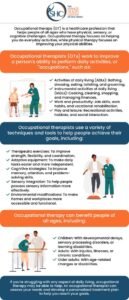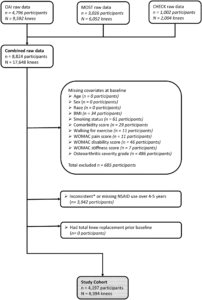Pancreatic Cancer Survival Rates
Pancreatic Cancer Survival Rates: An In-Depth Overview
Read Time: 8 minutes
Introduction to Pancreatic Cancer Survival Rates
Pancreatic cancer is known for having one of the lowest survival rates among common cancers. It is a highly feared diagnosis because most people diagnosed with pancreatic cancer do not survive five years after diagnosis. The one-year relative survival rate for pancreatic cancer is 28.8%, while the five-year survival rate is just 7.9%. This cancer is particularly fatal because of its challenging early detection. Symptoms are often too mild, leading to late-stage diagnoses, and half of all pancreatic cancers are already at stage 4 when identified, making treatment difficult.
Why Pancreatic Cancer Is Difficult to Detect and Treat
A key factor contributing to the poor prognosis of pancreatic cancer is the difficulty in screening for the disease. Early-stage pancreatic cancer often doesn’t present noticeable symptoms, which means that tumors are usually discovered when they have already spread to other organs, making them difficult to treat with curative surgery. According to the American Cancer Society, an estimated 57,600 cases of pancreatic cancer were diagnosed in 2020, resulting in 47,050 deaths. The cancer is slightly more common in men than in women and its prevalence increases with age.
Pancreatic Cancer Incidence Across Demographics
The survival rates for pancreatic cancer are also affected by demographic factors. For instance, the cancer incidence rate is higher among Black Americans compared to White Americans, and lower among Asian Americans and Pacific Islanders. Survival rates can vary depending on when and where the diagnosis is made, as well as other individual factors.
Staging of Pancreatic Cancer: Understanding Its Progression
The staging of pancreatic cancer is crucial for understanding its spread and prognosis. Doctors typically use the TNM staging system, which evaluates the size of the tumor, the extent of lymph node involvement, and whether the cancer has metastasized (spread) to other parts of the body.
T – Tumor: This describes the size of the tumor and its invasion into nearby structures.
N – Lymph Nodes: The presence of cancer in the lymph nodes increases the likelihood that the cancer will spread to other areas.
M – Metastasis: This refers to the spread of cancer to distant organs and lymph nodes.
Some physicians prefer to categorize pancreatic cancer into four stages:
-
Resectable: Surgery can remove the tumor.
-
Borderline resectable: The tumor is difficult to remove, but surgery might be possible after shrinking it with other treatments.
-
Locally advanced: The tumor cannot be removed surgically because it has spread to nearby tissues.
-
Metastatic: Cancer has spread to distant parts of the body, such as the liver or lungs.
The Role of Tumor Grade in Prognosis
In addition to staging, the grade of the tumor is also important. Doctors examine cancerous cells and tissues under a microscope to determine how closely they resemble normal cells. This grading helps predict how aggressive the cancer may be:
-
Grade 1 (low grade): Cells look more like normal cells and tend to grow more slowly.
-
Grade 2 (intermediate grade): Cells look somewhat abnormal and grow at a moderate rate.
-
Grade 3 (high grade): Cells appear very abnormal and grow quickly.
-
Grade 4 (undifferentiated): Cells are highly abnormal and grow very rapidly.
Survival Rates: How Doctors Measure Prognosis
Survival rates are statistical estimates used by doctors to help predict the likelihood of survival based on the diagnosis. These rates are often discussed in terms of the five-year survival rate, although one-year, two-year, and even ten-year survival rates may also be relevant. It is important to note that these survival rates represent averages and do not predict individual outcomes.
For pancreatic cancer, the survival rate varies significantly depending on the stage at diagnosis:
-
Localized (stage 1): 39.4% five-year survival rate.
-
Regional (stage 2): 13.3% five-year survival rate.
-
Distant (stage 4): 2.9% five-year survival rate.
-
Unstaged: 6.1% five-year survival rate.
Factors Influencing Survival Rates
Several factors can affect the survival rate of someone diagnosed with pancreatic cancer. Some of these factors are within the patient’s control, while others are not:
-
Age: Older individuals generally have a worse prognosis compared to younger people.
-
Race: Pancreatic cancer rates are notably higher in Black individuals than in other racial groups.
-
Cancer Type: Different types of pancreatic tumors (such as neuroendocrine tumors and adenocarcinomas) can respond differently to treatment.
-
Smoking: Smoking is a significant risk factor for developing pancreatic cancer. If smoking were eliminated, there could be a 30% reduction in pancreatic cancer cases.
-
Alcohol Use: Heavy alcohol consumption can worsen the prognosis for those diagnosed with pancreatic cancer.
-
Obesity: Being overweight before the age of 50 is linked to an increased risk of pancreatic cancer.
-
Diabetes: People with diabetes may experience worse outcomes if diagnosed with pancreatic cancer.
-
Performance Status: The ability to perform daily activities is a key indicator of prognosis. The more difficulty someone has performing routine tasks, the worse their prognosis is likely to be.
-
Surgical Treatment: If surgery is possible and the tumor can be removed completely, the patient’s outlook improves significantly.
What You Can Do: Managing Pancreatic Cancer
If you’ve been diagnosed with pancreatic cancer, there may not be much you can do to directly change the course of the disease. However, maintaining a healthy diet and staying physically active, if possible, can improve overall health and performance status, which may contribute to better outcomes. It’s also essential to follow your oncologist’s advice regarding treatment and lifestyle changes.
-
Quit Smoking: Quitting smoking is always beneficial. After ten years of not smoking, your risk of pancreatic cancer becomes similar to that of someone who never smoked.
-
Lose Weight: If you’re overweight, losing weight could lower your risk of developing pancreatic cancer and other health conditions, though it’s not advisable to attempt weight loss during chemotherapy.
-
Eat Healthily: Focus on a nutritious diet and ensure you’re taking digestive enzymes if prescribed by your doctor to help with digestion.
Before making any lifestyle changes, always consult with your oncologist.
Frequently Asked Questions
How can I improve my chances of surviving pancreatic cancer?
While lifestyle changes can’t guarantee survival, they can improve overall health and quality of life. Quitting smoking, eating a healthy diet, and staying active can all contribute to better outcomes.
Can pancreatic cancer be prevented?
There is no surefire way to prevent pancreatic cancer, but avoiding risk factors such as smoking, excessive alcohol consumption, and maintaining a healthy weight may lower your risk.
Key Takeaways
-
Pancreatic cancer has one of the lowest survival rates among cancers.
-
Early detection is challenging due to mild symptoms, making the disease difficult to treat in its early stages.
-
Survival rates vary by stage, with the five-year survival rate being highest for localized cancer and lowest for metastatic cancer.
-
Lifestyle changes such as quitting smoking, eating healthy, and staying active may improve overall health, though they won’t necessarily increase survival rates.
Join Our Community
Want more insights like this? Subscribe to our newsletter for the latest updates and expert tips on health and wellness!









